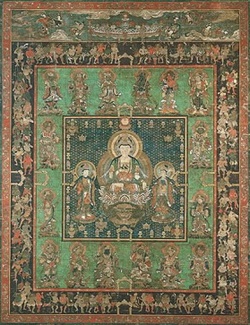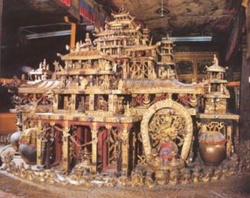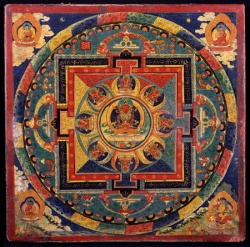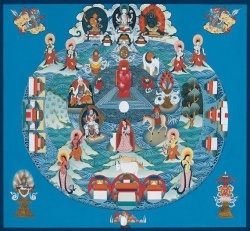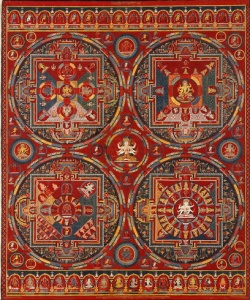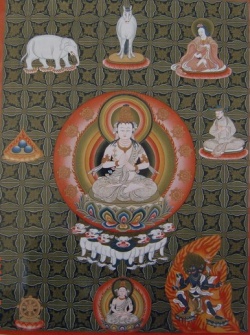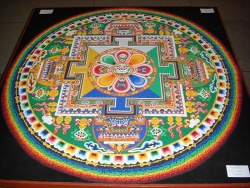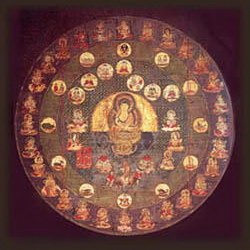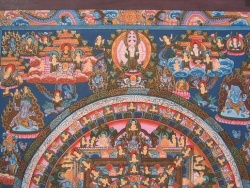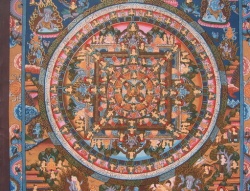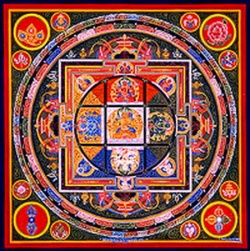Difference between revisions of "What is a mandala?"
m (Text replacement - "throwing" to "throwing") |
|||
| Line 1: | Line 1: | ||
[[File:392-1573-TN.jpg|thumb|250px|]][[File:3D-kal ac tala.jpg|thumb|250px|]][[File:6ajc-pi.jpg|thumb|250px|]][[File:76k088 n.jpg|thumb|250px|]][[File:853px-Tibetan,_Central_Tibet,_Tsang_(joject.jpg|thumb|250px|]] [[File:C44-1024.jpg|thumb|250px|]][[File:Chenrezig Sand Man.jpg|thumb|250px|]][[File:E.jp-TN.jpg|thumb|250px|]][[File:Ma45ndala3.JPG|thumb|250px|]][[File:Man3654dala2.JPG|thumb|250px|]][[File:Mand45ala.jpg|thumb|250px|]] | [[File:392-1573-TN.jpg|thumb|250px|]][[File:3D-kal ac tala.jpg|thumb|250px|]][[File:6ajc-pi.jpg|thumb|250px|]][[File:76k088 n.jpg|thumb|250px|]][[File:853px-Tibetan,_Central_Tibet,_Tsang_(joject.jpg|thumb|250px|]] [[File:C44-1024.jpg|thumb|250px|]][[File:Chenrezig Sand Man.jpg|thumb|250px|]][[File:E.jp-TN.jpg|thumb|250px|]][[File:Ma45ndala3.JPG|thumb|250px|]][[File:Man3654dala2.JPG|thumb|250px|]][[File:Mand45ala.jpg|thumb|250px|]] | ||
<poem> | <poem> | ||
| − | |||
| − | |||
| − | |||
| − | The [[word]] [[mandala]] itself is derived from the [[root]] manda, which means [[essence]], to which the suffix -la, meaning container, has been added. Thus, one obvious connotation of [[mandala]] is that it is a container of [[essence]]. As an image, a [[mandala]] may [[symbolize]] both the [[mind]] and the [[body]] of the [[Buddha]]. | + | |
| + | |||
| + | [[Buddhist Mandala]]: [[Sacred]] Geometry and [[Art]] | ||
| + | |||
| + | |||
| + | |||
| + | Perhaps the most admired and discussed [[symbol]] of [[Buddhist]] [[religion]] and [[art]] is the [[mandala]], a [[word]] which, like [[guru]] and [[yoga]], has become part of the English [[language]]. Its [[popularity]] is underscored by the use of the [[word]] [[mandala]] as a {{Wiki|synonym}} for [[sacred]] [[space]] in {{Wiki|scholarship}} [the] [[world]] over, and by its presence in English-language dictionaries and encyclopedias. Both broadly define [[mandalas]] as geometric designs intended to [[symbolize]] the [[universe]], and reference is made to their use in [[Buddhist]] and [[Hindu]] practices. | ||
| + | |||
| + | The [[mandala]] [[idea]] originated long ago before the [[idea]] of history itself. In the earliest level of [[India]] or even {{Wiki|Indo-European}} [[religion]], in the {{Wiki|Rig Veda}} and its associated {{Wiki|literature}}, [[mandala]] is the term for a [[chapter]], a collection of [[mantras]] or verse hymns chanted in {{Wiki|Vedic}} {{Wiki|ceremonies}}, perhaps coming from the [[sense]] of round, as in a round of songs. The [[universe]] was believed to originate from these hymns, whose [[sacred]] {{Wiki|sounds}} contained the {{Wiki|genetic}} patterns of [[beings]] and things, so there is already a clear [[sense]] of [[mandala]] as world-model. | ||
| + | |||
| + | The [[word]] [[mandala]] itself is derived from the [[root]] [[manda]], which means [[essence]], to which the suffix -la, meaning container, has been added. Thus, one obvious connotation of [[mandala]] is that it is a container of [[essence]]. As an image, a [[mandala]] may [[symbolize]] both the [[mind]] and the [[body]] of the [[Buddha]]. | ||
In [[esoteric Buddhism]] the [[principle]] in the [[mandala]] is the presence of the [[Buddha]] in it, but images of [[deities]] are not necessary. They may be presented either as a [[wheel]], a [[tree]], or a [[jewel]], or in any other [[symbolic]] [[manifestation]]. | In [[esoteric Buddhism]] the [[principle]] in the [[mandala]] is the presence of the [[Buddha]] in it, but images of [[deities]] are not necessary. They may be presented either as a [[wheel]], a [[tree]], or a [[jewel]], or in any other [[symbolic]] [[manifestation]]. | ||
| Line 13: | Line 20: | ||
CREATION OF A [[MANDALA]]: | CREATION OF A [[MANDALA]]: | ||
| − | The origin of the [[mandala]] is the center, a [[[bindu]] or] dot. It is a [[symbol]] apparently free of {{Wiki|dimensions}}. It means a 'seed', 'sperm', 'drop', the salient starting point. It is the [[gathering]] center in which the outside energies are drawn, and in the act of drawing the forces, the devotee's own energies unfold and are also drawn. Thus it represents the outer and inner spaces. Its purpose is to remove the object-subject {{Wiki|dichotomy}}. In the process, the [[mandala]] is [[consecrated]] to a [[deity]]. | + | The origin of the [[mandala]] is the center, a [[[bindu]] or] dot. It is a [[symbol]] apparently free of {{Wiki|dimensions}}. It means a 'seed', 'sperm', 'drop', the salient starting point. It is the [[gathering]] center in which the outside energies are drawn, and in the act of drawing the forces, the devotee's [[own]] energies unfold and are also drawn. Thus it represents the outer and inner spaces. Its {{Wiki|purpose}} is to remove the object-subject {{Wiki|dichotomy}}. In the process, the [[mandala]] is [[consecrated]] to a [[deity]]. |
| − | In its creation, a line materializes out of a dot. Other lines are drawn until they intersect, creating triangular geometrical patterns. The circle drawn around stands for the dynamic [[consciousness]] of the initiated. The outlying square [[symbolizes]] the [[physical]] [[world]] bound in four [[directions]], represented by the four gates; and the midmost or central area is the residence of the [[deity]]. Thus the center is [[visualized]] as the [[essence]] and the circumference as [[grasping]], thus in its complete picture a [[mandala]] means [[grasping]] the [[essence]]. | + | In its creation, a line materializes out of a dot. Other lines are drawn until they intersect, creating triangular geometrical patterns. The circle drawn around stands for the dynamic [[consciousness]] of the [[initiated]]. The outlying square [[symbolizes]] the [[physical]] [[world]] [[bound]] in four [[directions]], represented by the four gates; and the midmost or central area is the residence of the [[deity]]. Thus the center is [[visualized]] as the [[essence]] and the circumference as [[grasping]], thus in its complete picture a [[mandala]] means [[grasping]] the [[essence]]. |
CONSTRUCTION OF A [[MANDALA]]: | CONSTRUCTION OF A [[MANDALA]]: | ||
| − | Before a [[monk]] is permitted to work on constructing a [[mandala]] he must undergo a long period of technical artistic training and memorization, [[learning]] how to draw all the various [[symbols]] and studying related [[philosophical]] [[Wikipedia:concept|concepts]]. At ... [[Namgyal monastery]] (the personal [[monastery]] of the [[Dalai lama]]), for example, this period is three years. | + | Before a [[monk]] is permitted to work on constructing a [[mandala]] he must undergo a long period of technical artistic {{Wiki|training}} and [[memorization]], [[learning]] how to draw all the various [[symbols]] and studying related [[philosophical]] [[Wikipedia:concept|concepts]]. At ... [[Namgyal monastery]] (the personal [[monastery]] of the [[Dalai lama]]), for example, this period is three years. |
In the early stages of painting, the [[monks]] sit on the outer part of the unpainted [[mandala]] base, always facing the center. For larger sized [[Mandalas]], when the [[mandala]] is about halfway completed, the [[monks]] then stand on the floor, bending forward to apply the colors. | In the early stages of painting, the [[monks]] sit on the outer part of the unpainted [[mandala]] base, always facing the center. For larger sized [[Mandalas]], when the [[mandala]] is about halfway completed, the [[monks]] then stand on the floor, bending forward to apply the colors. | ||
| Line 25: | Line 32: | ||
[[Traditionally]], the [[mandala]] is divided into four quadrants and one [[monk]] is assigned to each. At the point where the [[monks]] stand to apply the colors, an assistant joins each of the four. Working co-operatively, the assistants help by filling in areas of {{Wiki|color}} while the primary four [[monks]] outline the other details. | [[Traditionally]], the [[mandala]] is divided into four quadrants and one [[monk]] is assigned to each. At the point where the [[monks]] stand to apply the colors, an assistant joins each of the four. Working co-operatively, the assistants help by filling in areas of {{Wiki|color}} while the primary four [[monks]] outline the other details. | ||
| − | The [[monks]] memorize each detail of the [[mandala]] as part of their [[monastery's]] training program. It is important to note that the [[mandala]] is explicitly based on the Scriptural texts. At the end of each work session, the [[monks]] dedicate any artistic or [[spiritual]] [[merit]] accumulated from this [[activity]] to the [[benefit]] of others. This practice prevails in the execution of all [[ritual]] arts. | + | The [[monks]] memorize each detail of the [[mandala]] as part of their [[monastery's]] {{Wiki|training}} program. It is important to note that the [[mandala]] is explicitly based on the [[Scriptural]] texts. At the end of each work session, the [[monks]] dedicate any artistic or [[spiritual]] [[merit]] [[accumulated]] from this [[activity]] to the [[benefit]] of others. This practice prevails in the execution of all [[ritual]] [[arts]]. |
| − | There is good [[reason]] for the extreme {{Wiki|degree}} of care and [[attention]] that the [[monks]] put into their work: they are actually imparting the [[Buddha's teachings]]. Since the [[mandala]] contains instructions by the [[Buddha]] for [[attaining]] [[enlightenment]], the [[purity]] of their [[motivation]] and the [[perfection]] of their work allows viewers the maximum [[benefit]]. | + | There is good [[reason]] for the extreme {{Wiki|degree}} of [[care]] and [[attention]] that the [[monks]] put into their work: they are actually imparting the [[Buddha's teachings]]. Since the [[mandala]] contains instructions by the [[Buddha]] for [[attaining]] [[enlightenment]], the [[purity]] of their [[motivation]] and the [[perfection]] of their work allows viewers the maximum [[benefit]]. |
Each detail in all four quadrants of the [[mandala]] faces the center, so that it is facing the resident [[deity]] of the [[mandala]]. Thus, from the {{Wiki|perspective}} of both the [[monks]] and the viewers [[standing]] around the [[mandala]], the details in the quadrant closest to the viewer appear upside down, while those in the most distant quadrant appear right side up. | Each detail in all four quadrants of the [[mandala]] faces the center, so that it is facing the resident [[deity]] of the [[mandala]]. Thus, from the {{Wiki|perspective}} of both the [[monks]] and the viewers [[standing]] around the [[mandala]], the details in the quadrant closest to the viewer appear upside down, while those in the most distant quadrant appear right side up. | ||
| Line 35: | Line 42: | ||
The preparation of a [[mandala]] is an artistic endeavor, but at the same [[time]] it is an act of {{Wiki|worship}}. In this [[form]] of {{Wiki|worship}} [[Wikipedia:concept|concepts]] and [[form]] are created in which the deepest intuitions are crystallized and expressed as [[spiritual]] [[art]]. The design, which is usually [[meditated]] upon, is a {{Wiki|continuum}} of spatial [[experiences]], the [[essence]] of which precedes its [[existence]], which means that the {{Wiki|concept}} precedes the [[form]]. | The preparation of a [[mandala]] is an artistic endeavor, but at the same [[time]] it is an act of {{Wiki|worship}}. In this [[form]] of {{Wiki|worship}} [[Wikipedia:concept|concepts]] and [[form]] are created in which the deepest intuitions are crystallized and expressed as [[spiritual]] [[art]]. The design, which is usually [[meditated]] upon, is a {{Wiki|continuum}} of spatial [[experiences]], the [[essence]] of which precedes its [[existence]], which means that the {{Wiki|concept}} precedes the [[form]]. | ||
| − | In its most common [[form]], the [[mandala]] appears as a series of concentric circles. Each [[mandala]] has its own resident [[deity]] housed in the square structure situated concentrically within these circles. Its perfect square shape indicates that the [[absolute]] [[space]] of [[wisdom]] is without aberration. | + | In its most common [[form]], the [[mandala]] appears as a series of concentric circles. Each [[mandala]] has its [[own]] resident [[deity]] housed in the square {{Wiki|structure}} situated concentrically within these circles. Its {{Wiki|perfect}} square shape indicates that the [[absolute]] [[space]] of [[wisdom]] is without aberration. |
| − | This square structure has four elaborate gates. These four doors [[symbolize]] the bringing together of the four [[boundless]] [[thoughts]] namely - [[loving kindness]], [[compassion]], [[sympathy]], and [[equanimity]]. Each of these gateways is adorned with [[bells]], garlands and other decorative items. This square [[form]] defines the architecture of the [[mandala]] described as a four-sided palace or [[temple]]. A palace because it is the residence of the presiding [[deity]] of the [[mandala]], a [[temple]] because it contains the [[essence]] of the [[Buddha]]. | + | This square {{Wiki|structure}} has four elaborate gates. These [[four doors]] [[symbolize]] the bringing together of the four [[boundless]] [[thoughts]] namely - [[loving kindness]], [[compassion]], [[sympathy]], and [[equanimity]]. Each of these gateways is adorned with [[bells]], garlands and other decorative items. This square [[form]] defines the [[architecture]] of the [[mandala]] described as a four-sided palace or [[temple]]. A palace because it is the residence of the presiding [[deity]] of the [[mandala]], a [[temple]] because it contains the [[essence]] of the [[Buddha]]. |
Illustration (148 kb): | Illustration (148 kb): | ||
| − | The series of circles surrounding the central palace follow an intense [[symbolic]] structure. Beginning with the outer circles, one often finds a ring of [[fire]], frequently depicted as a stylized scrollwork. This [[symbolizes]] the process of [[transformation]] which ordinary [[human beings]] have to undergo before entering the [[sacred]] territory within. This is followed by a ring of [[thunderbolt]] or [[diamond]] scepters ([[vajra]]), indicating the indestructibility and diamond-like brilliance of the [[mandala's]] [[spiritual realms]]. | + | The series of circles surrounding the central palace follow an intense [[symbolic]] {{Wiki|structure}}. Beginning with the outer circles, one often finds a ring of [[fire]], frequently depicted as a stylized scrollwork. This [[symbolizes]] the process of [[transformation]] which ordinary [[human beings]] have to undergo before entering the [[sacred]] territory within. This is followed by a ring of [[thunderbolt]] or [[diamond]] scepters ([[vajra]]), indicating the indestructibility and diamond-like [[brilliance]] of the [[mandala's]] [[spiritual realms]]. |
In the next concentric circle, particularly those [[mandalas]] which feature [[wrathful deities]], one finds eight [[cremation]] grounds arranged in a wide band. These represent the eight [[aggregates]] of [[human]] [[consciousness]] which tie man to the [[phenomenal world]] and to the cycle of [[birth]] and [[rebirth]]. | In the next concentric circle, particularly those [[mandalas]] which feature [[wrathful deities]], one finds eight [[cremation]] grounds arranged in a wide band. These represent the eight [[aggregates]] of [[human]] [[consciousness]] which tie man to the [[phenomenal world]] and to the cycle of [[birth]] and [[rebirth]]. | ||
| Line 47: | Line 54: | ||
Finally, at the center of the [[mandala]] lies the [[deity]], with whom the [[mandala]] is identified. It is the power of this [[deity]] that the [[mandala]] is said to be invested with. Most generally the central [[deity]] may be one of the following three: | Finally, at the center of the [[mandala]] lies the [[deity]], with whom the [[mandala]] is identified. It is the power of this [[deity]] that the [[mandala]] is said to be invested with. Most generally the central [[deity]] may be one of the following three: | ||
| − | 1) [[Peaceful]] [[Deities]]: A [[peaceful]] [[deity]] [[symbolizes]] its own particular existential and [[spiritual]] approach. For example, the image of [[Bodhisattva Avalokiteshvara]] [[symbolizes]] [[compassion]] as the central focus of the [[spiritual]] [[experience]]; that of [[Manjushri]] takes [[wisdom]] as the central focus; and that of [[Vajrapani]] emphasizes the need for [[courage]] and strength in the quest for [[sacred]] [[knowledge]]. | + | 1) [[Peaceful]] [[Deities]]: A [[peaceful]] [[deity]] [[symbolizes]] its [[own]] particular [[existential]] and [[spiritual]] approach. For example, the image of [[Bodhisattva Avalokiteshvara]] [[symbolizes]] [[compassion]] as the central focus of the [[spiritual]] [[experience]]; that of [[Manjushri]] takes [[wisdom]] as the central focus; and that of [[Vajrapani]] emphasizes the need for [[courage]] and strength in the quest for [[sacred]] [[knowledge]]. |
2) [[Wrathful Deities]]: [[Wrathful deities]] suggest the mighty struggle involved in [[overcoming]] one's alienation. They embody all the inner [[afflictions]] which darken our [[thoughts]], our words, and our [[deeds]] and which prohibit [[attainment]] of the [[Buddhist]] goal of full [[enlightenment]]. [[Traditionally]], [[wrathful deities]] are understood to be aspects of {{Wiki|benevolent}} {{Wiki|principles}}, {{Wiki|fearful}} only to those who {{Wiki|perceive}} them as alien forces. When [[recognized]] as aspects of one's [[self]] and tamed by [[spiritual]] practice, they assume a purely {{Wiki|benevolent}} guise. | 2) [[Wrathful Deities]]: [[Wrathful deities]] suggest the mighty struggle involved in [[overcoming]] one's alienation. They embody all the inner [[afflictions]] which darken our [[thoughts]], our words, and our [[deeds]] and which prohibit [[attainment]] of the [[Buddhist]] goal of full [[enlightenment]]. [[Traditionally]], [[wrathful deities]] are understood to be aspects of {{Wiki|benevolent}} {{Wiki|principles}}, {{Wiki|fearful}} only to those who {{Wiki|perceive}} them as alien forces. When [[recognized]] as aspects of one's [[self]] and tamed by [[spiritual]] practice, they assume a purely {{Wiki|benevolent}} guise. | ||
| − | 3) {{Wiki|Sexual}} [[Imagery]]: {{Wiki|Sexual}} [[imagery]] suggests the integrative process which lies at the [[heart]] of the [[mandala]]. {{Wiki|Male}} and {{Wiki|female}} [[elements]] are [[nothing]] but [[symbols]] of the countless pairs of opposites (e.g. [[love]] and [[hate]]; [[good and evil]] etc.) which one [[experiences]] in [[mundane]] [[existence]]. The initiate seeks to curtail his or her alienation, by accepting and enjoying all things as a seamless, interconnected field of [[experience]]. {{Wiki|Sexual}} [[imagery]] can also be understood as a {{Wiki|metaphor}} for [[enlightenment]], with its qualities of [[satisfaction]], [[bliss]], unity and completion. | + | 3) {{Wiki|Sexual}} [[Imagery]]: {{Wiki|Sexual}} [[imagery]] suggests the integrative process which lies at the [[heart]] of the [[mandala]]. {{Wiki|Male}} and {{Wiki|female}} [[elements]] are [[nothing]] but [[symbols]] of the countless pairs of opposites (e.g. [[love]] and [[hate]]; [[good and evil]] etc.) which one [[experiences]] in [[mundane]] [[existence]]. The [[initiate]] seeks to curtail his or her alienation, by accepting and enjoying all things as a seamless, interconnected field of [[experience]]. {{Wiki|Sexual}} [[imagery]] can also be understood as a {{Wiki|metaphor}} for [[enlightenment]], with its qualities of [[satisfaction]], [[bliss]], {{Wiki|unity}} and completion. |
Illustration [110 kb] : | Illustration [110 kb] : | ||
| Line 57: | Line 64: | ||
COLOR SYMBOLISM OF THE [[MANDALA]]: | COLOR SYMBOLISM OF THE [[MANDALA]]: | ||
| − | If [[form]] is crucial to the [[mandala]], so too is {{Wiki|color}}. The quadrants of the mandala-palace are typically divided into isosceles triangles of {{Wiki|color}}, including four of the following five: white, yellow, red, green and dark blue. Each of these colors is associated with one of the five [[transcendental]] [[Buddhas]], further associated with the five [[delusions]] of [[human nature]]. These [[delusions]] obscure our [[true nature]], but through [[spiritual]] practice they can be [[transformed]] into the [[wisdom]] of these five respective [[Buddhas]]. Specifically: | + | If [[form]] is crucial to the [[mandala]], so too is {{Wiki|color}}. The quadrants of the [[mandala-palace]] are typically divided into isosceles triangles of {{Wiki|color}}, [[including]] four of the following five: white, [[yellow]], [[red]], [[green]] and [[dark blue]]. Each of these colors is associated with one of the five [[transcendental]] [[Buddhas]], further associated with the five [[delusions]] of [[human nature]]. These [[delusions]] obscure our [[true nature]], but through [[spiritual]] practice they can be [[transformed]] into the [[wisdom]] of these five respective [[Buddhas]]. Specifically: |
White - [[Vairocana]]: The [[delusion]] of [[ignorance]] becomes the [[wisdom]] of [[reality]]. | White - [[Vairocana]]: The [[delusion]] of [[ignorance]] becomes the [[wisdom]] of [[reality]]. | ||
| − | Yellow - [[Ratnasambhava]]: The [[delusion]] of [[pride]] becomes the [[wisdom]] of [[sameness]]. | + | [[Yellow]] - [[Ratnasambhava]]: The [[delusion]] of [[pride]] becomes the [[wisdom]] of [[sameness]]. |
| − | Red - [[Amitabha]]: The [[delusion]] of [[attachment]] becomes the [[wisdom of discernment]]. | + | [[Red]] - [[Amitabha]]: The [[delusion]] of [[attachment]] becomes the [[wisdom of discernment]]. |
| − | Green - [[Amoghasiddhi]]: The [[delusion]] of [[jealousy]] becomes the [[wisdom]] of [[accomplishment]]. | + | [[Green]] - [[Amoghasiddhi]]: The [[delusion]] of [[jealousy]] becomes the [[wisdom]] of [[accomplishment]]. |
Blue - [[Akshobhya]]: The [[delusion]] of [[anger]] becomes [[mirror-like wisdom]]. | Blue - [[Akshobhya]]: The [[delusion]] of [[anger]] becomes [[mirror-like wisdom]]. | ||
| Line 74: | Line 81: | ||
In addition to decorating and sanctifying [[temples]] and homes, in [[Tibetan]] [[life]] the [[mandala]] is [[traditionally]] [[offered]] to one's [[lama]] or [[guru]] when a request has been made for teachings or an [[initiation]] - where the entire [[offering]] of the [[universe]] (represented by the [[mandala]]) [[symbolizes]] the most appropriate payment for the preciousness of the teachings. | In addition to decorating and sanctifying [[temples]] and homes, in [[Tibetan]] [[life]] the [[mandala]] is [[traditionally]] [[offered]] to one's [[lama]] or [[guru]] when a request has been made for teachings or an [[initiation]] - where the entire [[offering]] of the [[universe]] (represented by the [[mandala]]) [[symbolizes]] the most appropriate payment for the preciousness of the teachings. | ||
| − | Once in a desolate [[Indian]] landscape the [[Mahasiddha]] [[Tilopa]] requested a [[mandala offering]] from his [[disciple]] [[Naropa]], and there being no readily available materials with which to construct a [[mandala]], [[Naropa]] urinated on the sand and formed an [[offering]] of a wet-sand [[mandala]]. | + | Once in a desolate [[Indian]] landscape the [[Mahasiddha]] [[Tilopa]] requested a [[mandala offering]] from his [[disciple]] [[Naropa]], and there being no readily available materials with which [[to construct]] a [[mandala]], [[Naropa]] urinated on the sand and formed an [[offering]] of a wet-sand [[mandala]]. |
On another occasion [[Naropa]] used his {{Wiki|blood}}, head, and limbs to create a [[mandala offering]] for his [[guru]], who was [[delighted]] with these spontaneous [[offerings]]. | On another occasion [[Naropa]] used his {{Wiki|blood}}, head, and limbs to create a [[mandala offering]] for his [[guru]], who was [[delighted]] with these spontaneous [[offerings]]. | ||
| Line 80: | Line 87: | ||
Conclusion: | Conclusion: | ||
| − | The [[visualization]] and concretization of the [[mandala]] {{Wiki|concept}} is one of the most significant contributions of [[Buddhism]] to [[religious]] {{Wiki|psychology}}. [[Mandalas]] are seen as [[sacred]] places which, by their very presence in the [[world]], remind a viewer of the immanence of sanctity in the [[universe]] and its potential in himself. In the context of the [[Buddhist path]] the purpose of a [[mandala]] is to put an end to [[human]] [[suffering]], to attain [[enlightenment]] and to attain a correct [[view]] of [[Reality]]. It is a means to discover [[divinity]] by the [[realization]] that it resides within one's own [[self]]. | + | The [[visualization]] and concretization of the [[mandala]] {{Wiki|concept}} is one of the most significant contributions of [[Buddhism]] to [[religious]] {{Wiki|psychology}}. [[Mandalas]] are seen as [[sacred]] places which, by their very presence in the [[world]], remind a viewer of the {{Wiki|immanence}} of sanctity in the [[universe]] and its potential in himself. In the context of the [[Buddhist path]] the {{Wiki|purpose}} of a [[mandala]] is to put an end to [[human]] [[suffering]], to attain [[enlightenment]] and to attain a correct [[view]] of [[Reality]]. It is a means to discover [[divinity]] by the [[realization]] that it resides within one's [[own]] [[self]]. |
Comments about [[Sacred]] [[Art]] and Geometry should go to feedback@exoticindiaart.com Other articles on the [[art]] of [[India]] may be found at http://www.exoticindiaart.com/update.htm where you can subscribe to Nitin's Monthly Newsletter. | Comments about [[Sacred]] [[Art]] and Geometry should go to feedback@exoticindiaart.com Other articles on the [[art]] of [[India]] may be found at http://www.exoticindiaart.com/update.htm where you can subscribe to Nitin's Monthly Newsletter. | ||
The [[Mandala]] in [[Tantric]] [[Initiations]] | The [[Mandala]] in [[Tantric]] [[Initiations]] | ||
| − | During an [[initiation]] or [[empowerment]], four types of [[mandala]] are present: | + | During an [[initiation]] or [[empowerment]], four types of [[mandala]] are {{Wiki|present}}: |
The building, room or [[sacred]] [[space]] in which the [[ritual]] occurs is [[consecrated]] and considered a [[mandala]]. | The building, room or [[sacred]] [[space]] in which the [[ritual]] occurs is [[consecrated]] and considered a [[mandala]]. | ||
| Line 95: | Line 102: | ||
The [[symbolic]] gesture of [[offering]] the [[world]] and its goods using fingers. | The [[symbolic]] gesture of [[offering]] the [[world]] and its goods using fingers. | ||
| − | Similar to the scapular that is still pinned by a doting parent to the clothing of {{Wiki|Catholic}} children for their [[protection]], some [[Tibetan]] [[religious]] make these [[mandalas]] to sell in order to pay for their [[food]], [[shelter]] and [[education]]. [[Prayers]] and [[mantras]] are hand-written on fine paper using [[traditional]] methods while the [[monk]] does the related practice. The paper is then carefully folded into squares which are wound and woven with the braided threads of suitable colours to [[form]] the appropriate accompanying [[mandala]]. | + | Similar to the scapular that is still pinned by a doting [[parent]] to the clothing of {{Wiki|Catholic}} children for their [[protection]], some [[Tibetan]] [[religious]] make these [[mandalas]] to sell in order to pay for their [[food]], [[shelter]] and [[education]]. [[Prayers]] and [[mantras]] are hand-written on fine paper using [[traditional]] [[methods]] while the [[monk]] does the related practice. The paper is then carefully folded into squares which are wound and woven with the braided threads of suitable colours to [[form]] the appropriate accompanying [[mandala]]. |
^ The above [[amulet]] was made by Tenzing [[Nyima]] [[Lama]], {{Wiki|Kathmandu}}, [[Nepal]]. | ^ The above [[amulet]] was made by Tenzing [[Nyima]] [[Lama]], {{Wiki|Kathmandu}}, [[Nepal]]. | ||
| − | {{Wiki|Individual}} [[Tibetan Buddhist]] practitioners make a [[symbolic]] [[mandala offering]] of {{Wiki|rice}} or other grain as part of the preliminary [[Vajrayana]] practices or [[ngondro]]. A round 3-tiered metal plate [triya] is used for this purpose. | + | {{Wiki|Individual}} [[Tibetan Buddhist]] practitioners make a [[symbolic]] [[mandala offering]] of {{Wiki|rice}} or other grain as part of the preliminary [[Vajrayana]] practices or [[ngondro]]. A round 3-tiered metal plate [triya] is used for this {{Wiki|purpose}}. |
The [[Mandala]] and {{Wiki|Western}} {{Wiki|Psychology}} | The [[Mandala]] and {{Wiki|Western}} {{Wiki|Psychology}} | ||
| − | Student, protege and some-time opponent of {{Wiki|Sigmund Freud}}, "the father of {{Wiki|psychoanalysis}}," {{Wiki|Carl Gustav Jung}} (1875-1961) [[thought]] that traces of powerful, fundamental common past [[experiences]] of all [[humanity]] lie in every individual's {{Wiki|unconscious mind}}. He coined the [[word]] {{Wiki|archetype}} to denote these images, story lines and reactions. | + | [[Student]], protege and some-time opponent of {{Wiki|Sigmund Freud}}, "the father of {{Wiki|psychoanalysis}}," {{Wiki|Carl Gustav Jung}} (1875-1961) [[thought]] that traces of powerful, fundamental common {{Wiki|past}} [[experiences]] of all [[humanity]] lie in every individual's {{Wiki|unconscious mind}}. He coined the [[word]] {{Wiki|archetype}} to denote these images, story lines and reactions. |
| − | He is the single [[person]] most responsible for introducing the [[Sanskrit]] [[word]] [[mandala]] into mainstream {{Wiki|Western culture}}. The [[idea]] that a symmetrical [[symbolic]] drawing might have a {{Wiki|psychologically}} [[healing]] effect derives from his own personal [[experiences]] in the 1940's. However, it is important to note that he used the [[word]] in a rather idiosyncratic [personal, original] [[sense]]. That is, in his work he uses it to refer to a [[symbol]] created by the {{Wiki|individual}} in the [[form]] of a colourful, geometric diagram (usually, but not always circular) involving both personal and {{Wiki|cultural}} [[symbolism]]. | + | He is the single [[person]] most responsible for introducing the [[Sanskrit]] [[word]] [[mandala]] into {{Wiki|mainstream}} {{Wiki|Western culture}}. The [[idea]] that a symmetrical [[symbolic]] drawing might have a {{Wiki|psychologically}} [[healing]] effect derives from his [[own]] personal [[experiences]] in the 1940's. However, it is important to note that he used the [[word]] in a rather idiosyncratic [personal, original] [[sense]]. That is, in his work he uses it to refer to a [[symbol]] created by the {{Wiki|individual}} in the [[form]] of a colourful, geometric diagram (usually, but not always circular) involving both personal and {{Wiki|cultural}} [[symbolism]]. |
| − | Some therapists and clinicians believe that through creating circular [[symbolic]] designs, clients can express their state or level of [[psychological]] {{Wiki|integration}}. Some have gone as far as to say that through working with the coherence of these drawings, [[people]] can integrate their [[sense]] of [[Wikipedia:Identity (social science)|identity]] and improve or even create [[feelings]] of [[harmony]] through "psychosynthesis." | + | Some therapists and clinicians believe that through creating circular [[symbolic]] designs, clients can express their [[state]] or level of [[psychological]] {{Wiki|integration}}. Some have gone as far as to say that through working with the coherence of these drawings, [[people]] can integrate their [[sense]] of [[Wikipedia:Identity (social science)|identity]] and improve or even create [[feelings]] of [[harmony]] through "psychosynthesis." |
In 1840, an [[extraordinary]] Etruscan bronze chandelier with multiple oil [[lamp]] spouts dating from about 500 BCE was uncovered at Cortona, {{Wiki|Italy}}. It is evocative of a [[Buddhist]] circular [[mandala]]. [small image at mid-page.] | In 1840, an [[extraordinary]] Etruscan bronze chandelier with multiple oil [[lamp]] spouts dating from about 500 BCE was uncovered at Cortona, {{Wiki|Italy}}. It is evocative of a [[Buddhist]] circular [[mandala]]. [small image at mid-page.] | ||
| − | The exterior ring consists of alternating silenus and siren figures. The [[centaurs]] play the syrinx (double flute) while the {{Wiki|female}} mermaids or [[naginis]] hold their hands to their chests. Dolphins play in a ring of stylized waves, while closer to the centre is a series of wild [[animals]]. At the core, crowned by {{Wiki|snakes}} is a Medusa mask comparable to the "mask of glory" -- open mouthed with {{Wiki|tongue}} extruding. On the obverse or upper side, between the spouts where flames would emerge and [[light]] the room, are sixteen other detailed figures. | + | The exterior ring consists of alternating silenus and siren figures. The [[centaurs]] play the syrinx (double {{Wiki|flute}}) while the {{Wiki|female}} mermaids or [[naginis]] hold their hands to their chests. Dolphins play in a ring of stylized waves, while closer to the centre is a series of wild [[animals]]. At the core, crowned by {{Wiki|snakes}} is a {{Wiki|Medusa}} mask comparable to the "mask of glory" -- open mouthed with {{Wiki|tongue}} extruding. On the obverse or upper side, between the spouts where flames would emerge and [[light]] the room, are sixteen other detailed figures. |
</poem> | </poem> | ||
{{R}} | {{R}} | ||
[http://www.khandro.net/ritual_mandala.htm www.khandro.net] | [http://www.khandro.net/ritual_mandala.htm www.khandro.net] | ||
[[Category:Mandala]] | [[Category:Mandala]] | ||
| + | [[Category:Alexander Berzin: Articles & publications]] | ||
Latest revision as of 07:05, 12 February 2017
Buddhist Mandala: Sacred Geometry and Art
Perhaps the most admired and discussed symbol of Buddhist religion and art is the mandala, a word which, like guru and yoga, has become part of the English language. Its popularity is underscored by the use of the word mandala as a synonym for sacred space in scholarship [the] world over, and by its presence in English-language dictionaries and encyclopedias. Both broadly define mandalas as geometric designs intended to symbolize the universe, and reference is made to their use in Buddhist and Hindu practices.
The mandala idea originated long ago before the idea of history itself. In the earliest level of India or even Indo-European religion, in the Rig Veda and its associated literature, mandala is the term for a chapter, a collection of mantras or verse hymns chanted in Vedic ceremonies, perhaps coming from the sense of round, as in a round of songs. The universe was believed to originate from these hymns, whose sacred sounds contained the genetic patterns of beings and things, so there is already a clear sense of mandala as world-model.
The word mandala itself is derived from the root manda, which means essence, to which the suffix -la, meaning container, has been added. Thus, one obvious connotation of mandala is that it is a container of essence. As an image, a mandala may symbolize both the mind and the body of the Buddha.
In esoteric Buddhism the principle in the mandala is the presence of the Buddha in it, but images of deities are not necessary. They may be presented either as a wheel, a tree, or a jewel, or in any other symbolic manifestation.
CREATION OF A MANDALA:
The origin of the mandala is the center, a [[[bindu]] or] dot. It is a symbol apparently free of dimensions. It means a 'seed', 'sperm', 'drop', the salient starting point. It is the gathering center in which the outside energies are drawn, and in the act of drawing the forces, the devotee's own energies unfold and are also drawn. Thus it represents the outer and inner spaces. Its purpose is to remove the object-subject dichotomy. In the process, the mandala is consecrated to a deity.
In its creation, a line materializes out of a dot. Other lines are drawn until they intersect, creating triangular geometrical patterns. The circle drawn around stands for the dynamic consciousness of the initiated. The outlying square symbolizes the physical world bound in four directions, represented by the four gates; and the midmost or central area is the residence of the deity. Thus the center is visualized as the essence and the circumference as grasping, thus in its complete picture a mandala means grasping the essence.
CONSTRUCTION OF A MANDALA:
Before a monk is permitted to work on constructing a mandala he must undergo a long period of technical artistic training and memorization, learning how to draw all the various symbols and studying related philosophical concepts. At ... Namgyal monastery (the personal monastery of the Dalai lama), for example, this period is three years.
In the early stages of painting, the monks sit on the outer part of the unpainted mandala base, always facing the center. For larger sized Mandalas, when the mandala is about halfway completed, the monks then stand on the floor, bending forward to apply the colors.
Traditionally, the mandala is divided into four quadrants and one monk is assigned to each. At the point where the monks stand to apply the colors, an assistant joins each of the four. Working co-operatively, the assistants help by filling in areas of color while the primary four monks outline the other details.
The monks memorize each detail of the mandala as part of their monastery's training program. It is important to note that the mandala is explicitly based on the Scriptural texts. At the end of each work session, the monks dedicate any artistic or spiritual merit accumulated from this activity to the benefit of others. This practice prevails in the execution of all ritual arts.
There is good reason for the extreme degree of care and attention that the monks put into their work: they are actually imparting the Buddha's teachings. Since the mandala contains instructions by the Buddha for attaining enlightenment, the purity of their motivation and the perfection of their work allows viewers the maximum benefit.
Each detail in all four quadrants of the mandala faces the center, so that it is facing the resident deity of the mandala. Thus, from the perspective of both the monks and the viewers standing around the mandala, the details in the quadrant closest to the viewer appear upside down, while those in the most distant quadrant appear right side up.
Generally, each monk keeps to his quadrant while painting the square palace. When they are painting the concentric circles, they work in tandem, moving all around the mandala. They wait until an entire cyclic phase or layer is completed before moving outward together. This ensures that balance is maintained, and that no quadrant of the mandala grows faster than another.
The preparation of a mandala is an artistic endeavor, but at the same time it is an act of worship. In this form of worship concepts and form are created in which the deepest intuitions are crystallized and expressed as spiritual art. The design, which is usually meditated upon, is a continuum of spatial experiences, the essence of which precedes its existence, which means that the concept precedes the form.
In its most common form, the mandala appears as a series of concentric circles. Each mandala has its own resident deity housed in the square structure situated concentrically within these circles. Its perfect square shape indicates that the absolute space of wisdom is without aberration.
This square structure has four elaborate gates. These four doors symbolize the bringing together of the four boundless thoughts namely - loving kindness, compassion, sympathy, and equanimity. Each of these gateways is adorned with bells, garlands and other decorative items. This square form defines the architecture of the mandala described as a four-sided palace or temple. A palace because it is the residence of the presiding deity of the mandala, a temple because it contains the essence of the Buddha.
Illustration (148 kb):
The series of circles surrounding the central palace follow an intense symbolic structure. Beginning with the outer circles, one often finds a ring of fire, frequently depicted as a stylized scrollwork. This symbolizes the process of transformation which ordinary human beings have to undergo before entering the sacred territory within. This is followed by a ring of thunderbolt or diamond scepters (vajra), indicating the indestructibility and diamond-like brilliance of the mandala's spiritual realms.
In the next concentric circle, particularly those mandalas which feature wrathful deities, one finds eight cremation grounds arranged in a wide band. These represent the eight aggregates of human consciousness which tie man to the phenomenal world and to the cycle of birth and rebirth.
Finally, at the center of the mandala lies the deity, with whom the mandala is identified. It is the power of this deity that the mandala is said to be invested with. Most generally the central deity may be one of the following three:
1) Peaceful Deities: A peaceful deity symbolizes its own particular existential and spiritual approach. For example, the image of Bodhisattva Avalokiteshvara symbolizes compassion as the central focus of the spiritual experience; that of Manjushri takes wisdom as the central focus; and that of Vajrapani emphasizes the need for courage and strength in the quest for sacred knowledge.
2) Wrathful Deities: Wrathful deities suggest the mighty struggle involved in overcoming one's alienation. They embody all the inner afflictions which darken our thoughts, our words, and our deeds and which prohibit attainment of the Buddhist goal of full enlightenment. Traditionally, wrathful deities are understood to be aspects of benevolent principles, fearful only to those who perceive them as alien forces. When recognized as aspects of one's self and tamed by spiritual practice, they assume a purely benevolent guise.
3) Sexual Imagery: Sexual imagery suggests the integrative process which lies at the heart of the mandala. Male and female elements are nothing but symbols of the countless pairs of opposites (e.g. love and hate; good and evil etc.) which one experiences in mundane existence. The initiate seeks to curtail his or her alienation, by accepting and enjoying all things as a seamless, interconnected field of experience. Sexual imagery can also be understood as a metaphor for enlightenment, with its qualities of satisfaction, bliss, unity and completion.
Illustration [110 kb] :
COLOR SYMBOLISM OF THE MANDALA:
If form is crucial to the mandala, so too is color. The quadrants of the mandala-palace are typically divided into isosceles triangles of color, including four of the following five: white, yellow, red, green and dark blue. Each of these colors is associated with one of the five transcendental Buddhas, further associated with the five delusions of human nature. These delusions obscure our true nature, but through spiritual practice they can be transformed into the wisdom of these five respective Buddhas. Specifically:
White - Vairocana: The delusion of ignorance becomes the wisdom of reality.
Yellow - Ratnasambhava: The delusion of pride becomes the wisdom of sameness.
Red - Amitabha: The delusion of attachment becomes the wisdom of discernment.
Green - Amoghasiddhi: The delusion of jealousy becomes the wisdom of accomplishment.
Blue - Akshobhya: The delusion of anger becomes mirror-like wisdom.
THE MANDALA AS A SACRED OFFERING:
In addition to decorating and sanctifying temples and homes, in Tibetan life the mandala is traditionally offered to one's lama or guru when a request has been made for teachings or an initiation - where the entire offering of the universe (represented by the mandala) symbolizes the most appropriate payment for the preciousness of the teachings.
Once in a desolate Indian landscape the Mahasiddha Tilopa requested a mandala offering from his disciple Naropa, and there being no readily available materials with which to construct a mandala, Naropa urinated on the sand and formed an offering of a wet-sand mandala.
On another occasion Naropa used his blood, head, and limbs to create a mandala offering for his guru, who was delighted with these spontaneous offerings.
Conclusion:
The visualization and concretization of the mandala concept is one of the most significant contributions of Buddhism to religious psychology. Mandalas are seen as sacred places which, by their very presence in the world, remind a viewer of the immanence of sanctity in the universe and its potential in himself. In the context of the Buddhist path the purpose of a mandala is to put an end to human suffering, to attain enlightenment and to attain a correct view of Reality. It is a means to discover divinity by the realization that it resides within one's own self.
Comments about Sacred Art and Geometry should go to feedback@exoticindiaart.com Other articles on the art of India may be found at http://www.exoticindiaart.com/update.htm where you can subscribe to Nitin's Monthly Newsletter.
The Mandala in Tantric Initiations
During an initiation or empowerment, four types of mandala are present:
The building, room or sacred space in which the ritual occurs is consecrated and considered a mandala.
There may be an image or construction in three dimensions that stands for the residence of the tantric deity. Those participating will get to see it as they go to the front for the various empowerments. In fact, this visit may be considered a separate empowerment in itself.
The participants will offer rice, symbolic of all wealth, by throwing it at least twice during the ritual. The rice is not wasted, but is swept up and collected to feed to birds and other animals. [By the way, there is no evidence to suggest that it swells up in their bodies!]
The symbolic gesture of offering the world and its goods using fingers.
Similar to the scapular that is still pinned by a doting parent to the clothing of Catholic children for their protection, some Tibetan religious make these mandalas to sell in order to pay for their food, shelter and education. Prayers and mantras are hand-written on fine paper using traditional methods while the monk does the related practice. The paper is then carefully folded into squares which are wound and woven with the braided threads of suitable colours to form the appropriate accompanying mandala.
^ The above amulet was made by Tenzing Nyima Lama, Kathmandu, Nepal.
Individual Tibetan Buddhist practitioners make a symbolic mandala offering of rice or other grain as part of the preliminary Vajrayana practices or ngondro. A round 3-tiered metal plate [triya] is used for this purpose.
The Mandala and Western Psychology
Student, protege and some-time opponent of Sigmund Freud, "the father of psychoanalysis," Carl Gustav Jung (1875-1961) thought that traces of powerful, fundamental common past experiences of all humanity lie in every individual's unconscious mind. He coined the word archetype to denote these images, story lines and reactions.
He is the single person most responsible for introducing the Sanskrit word mandala into mainstream Western culture. The idea that a symmetrical symbolic drawing might have a psychologically healing effect derives from his own personal experiences in the 1940's. However, it is important to note that he used the word in a rather idiosyncratic [personal, original] sense. That is, in his work he uses it to refer to a symbol created by the individual in the form of a colourful, geometric diagram (usually, but not always circular) involving both personal and cultural symbolism.
Some therapists and clinicians believe that through creating circular symbolic designs, clients can express their state or level of psychological integration. Some have gone as far as to say that through working with the coherence of these drawings, people can integrate their sense of identity and improve or even create feelings of harmony through "psychosynthesis."
In 1840, an extraordinary Etruscan bronze chandelier with multiple oil lamp spouts dating from about 500 BCE was uncovered at Cortona, Italy. It is evocative of a Buddhist circular mandala. [small image at mid-page.]
The exterior ring consists of alternating silenus and siren figures. The centaurs play the syrinx (double flute) while the female mermaids or naginis hold their hands to their chests. Dolphins play in a ring of stylized waves, while closer to the centre is a series of wild animals. At the core, crowned by snakes is a Medusa mask comparable to the "mask of glory" -- open mouthed with tongue extruding. On the obverse or upper side, between the spouts where flames would emerge and light the room, are sixteen other detailed figures.
